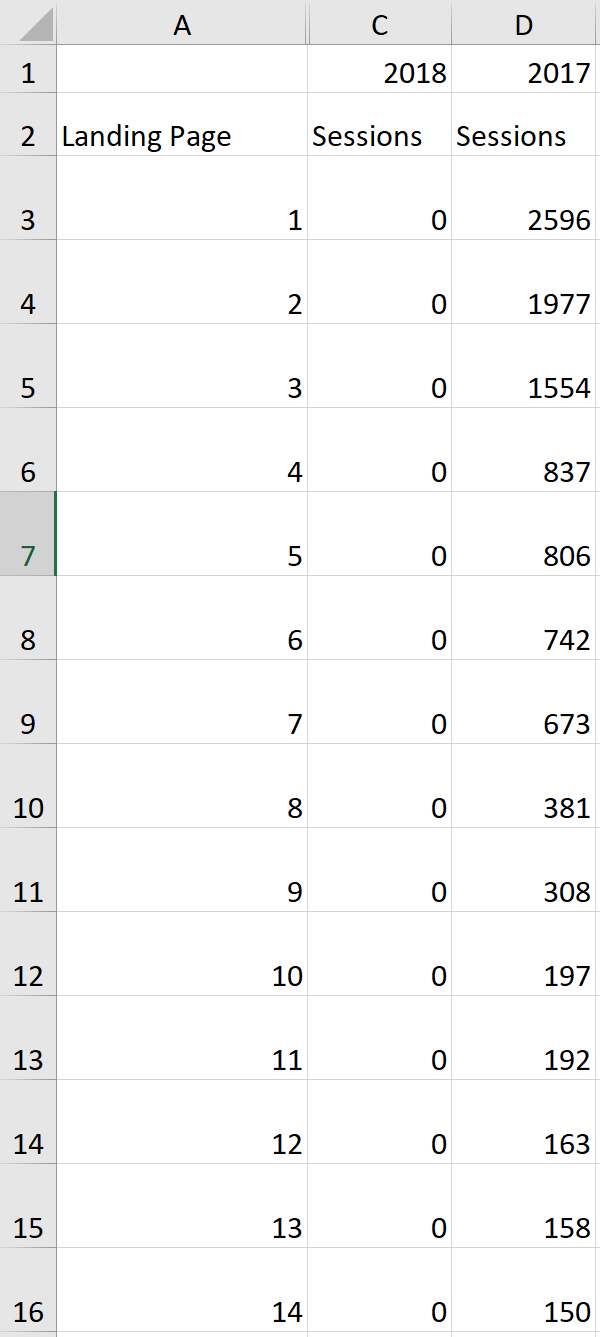 I recently worked with a client to relaunch their website, and as part of the process, the client chose to cull much of its content in an effort to have a leaner site.
I recently worked with a client to relaunch their website, and as part of the process, the client chose to cull much of its content in an effort to have a leaner site.
Having a lot of content on your site can make content management seem overwhelming, so it’s understandable an organization may want to cut down on the quantity of content to make the effort more manageable overall.
However, be careful what you cut! All too often in organizations, the various stakeholders for the website work in disparate groups or even various agencies, which can have a negative effect on planning and communication. Sometimes search engine optimization is seen as an afterthought, while it should be an integrated strategy throughout the website redesign and life cycle.
In the case of this client, against my recommendations, they accidentally cut out whole pages of content that ranked well for highly trafficked keyword phrases. This led to significant traffic losses — nearly 40 percent of organic traffic year over year — because the client chose to cut pages from the site that were highly trafficked pages from organic search.
Avoid cutting important content
An ounce of prevention is worth a pound of cure, and that saying holds true for search engine optimization (SEO) as well. It’s much better to follow the best option at the beginning rather than trying to clean up what could amount to big mistakes later.
Before you cut any content from your website, first see how that content performs at driving traffic overall to your website. In Google Analytics, you can use the Channels report, choose Organic Search and look at Landing Page to see which specific pages get the most traffic from organic search. That’s likely to be content you’re going to want to keep, even if you need to redirect it to a new uniform resource locator (URL). If the content is outdated, consider updating it with new details.

Even if you do end up cutting content, remember to 301 redirect that page to an appropriate page so that site visitors (and the search engines) can readily locate the closest alternative.
How to recover if you cut the wrong content
If you notice large organic traffic drops after a redesign or after you’ve removed content from a site, determine if the cause was because the content was removed.
Start with Google Analytics — set the time frame and compare it to a time before the content was cut, such as the same period last year. Choose the Channels report, choose Organic Search and look at the Landing Page report.
Sort the sessions from lowest to highest so that the pages that currently have zero sessions are highest in your list. Then download the data to Excel to do some comparisons.
In this example, I’ve sorted the data to show only pages that had more than 100 sessions in June 2017 but have 0 sessions in June 2018. As you can see, there are some pages that had significant organic traffic in 2017 but have no traffic to those pages in 2018:

Next, I have to be sure these pages did not change URLs and maybe reside under a new URL in 2018. One easy way to check is to enter the old URL into the browser. Does it redirect? If so, then also check that the redirect is a 301 redirect.
If the old URL is not redirected and you have significant organic search traffic drops, then you may have content that has been cut from the site that was actually very beneficial to SEO. Take a look at the old content. If you don’t have a copy of the old content, try using a tool like the Internet Archive to find an older version of that content.
I was able to do this with landing page ID #7 in the spreadsheet above. As you can see, the previous page had over 800 visits per month from organic search. The page was not redirected to a similar page, and the page was cut with the site relaunch. That one page had over 600 words and many great internal and external links as well.
Putting the content back
Before I suggest the content be reintegrated into the site, we’ll have to consider how and where the content fits into the site overall.
- Should the old content be refreshed and added back to the site?
- Is the content still relevant to the organization and your offerings?
Evaluate the content and determine if it would be appropriate to add it back to the site to try to regain some of the traffic you’ve lost.
Contributing authors are invited to create content for Search Engine Land and are chosen for their expertise and contribution to the search community. Our contributors work under the oversight of the editorial staff and contributions are checked for quality and relevance to our readers. The opinions they express are their own.



